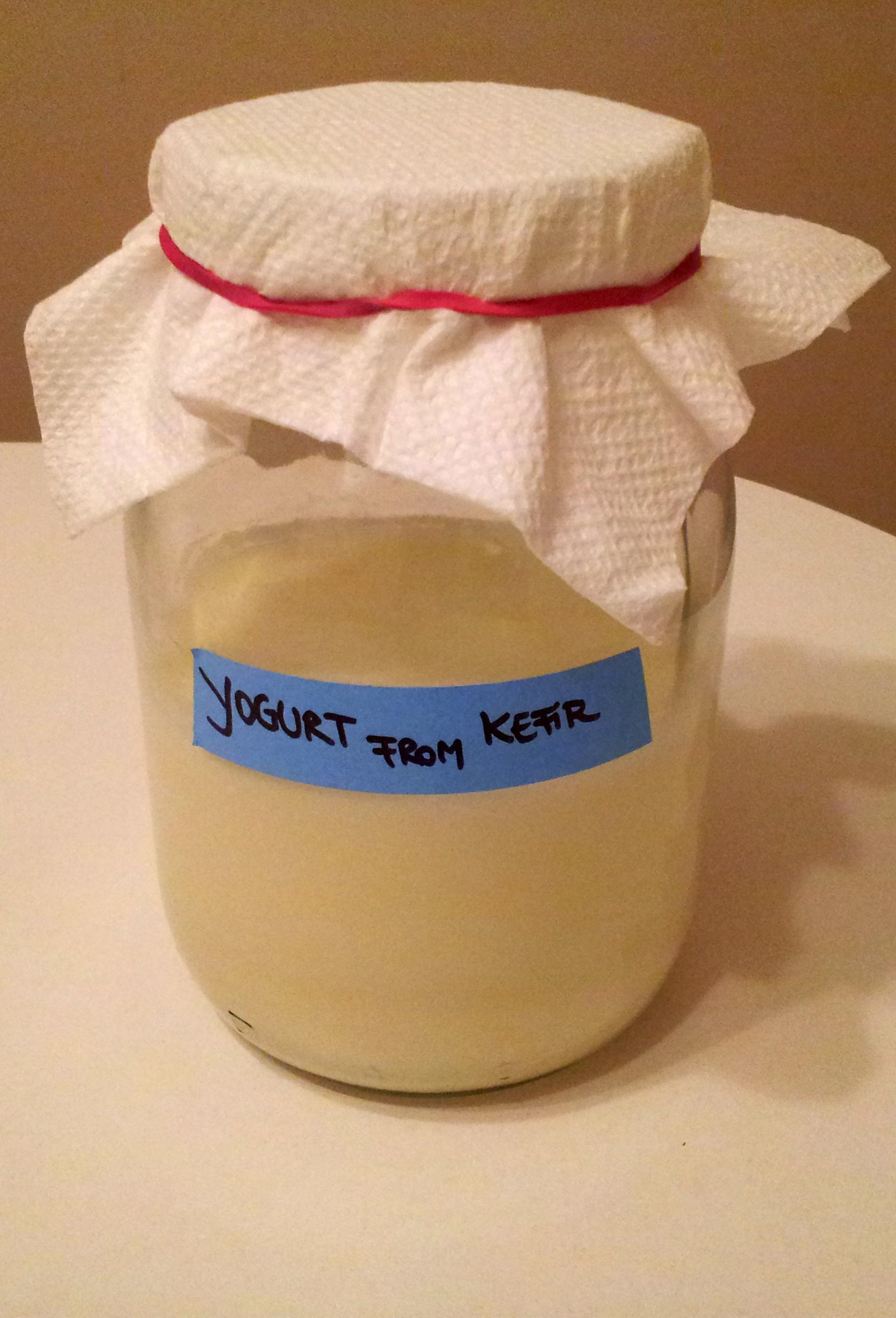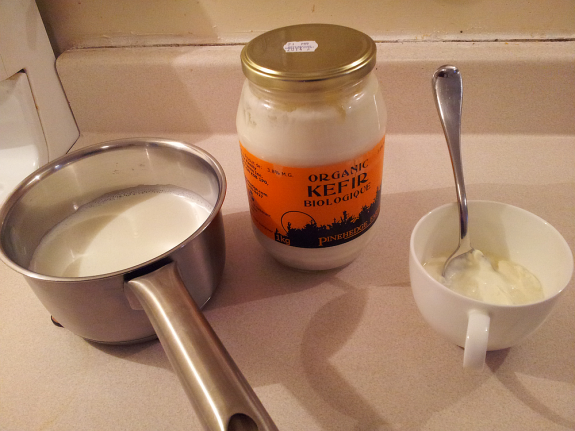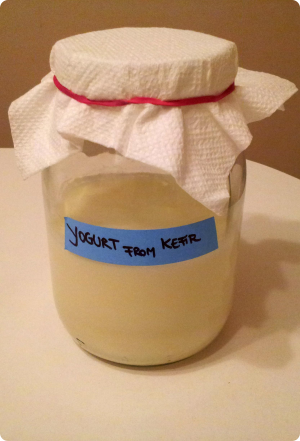Yogurt Might Not Be the Best Fermented Milk Drink
Kefir is a fermented milk drink, similar to yogurt, with a milder taste and a different probiotic composition. Kefir is gaining popularity more and more, because of its specific taste that appeals to many people, and because of its increased health benefits.
Yogurt on the other hand is the most popular fermented milk product, the number one favorite on the market.
Kefir and Yogurt are cultured milk products with great nutritious value, and health benefits stemming from the probiotics content. They are both considered functional foods, because they improve our health in a few ways. They have a similar taste, and they look like any other fermented milk drinks. One would be tempted to say that the two are the same thing, but they are quite different in many aspects, and I’ll try to shed some light on that.
Kefir vs Yogurt – How Does Kefir Taste compared Yogurt?
There is a consistent difference between the taste of the two fermented milk products, and people are quite attached to one versus the other. For instance, I find the yogurt a little too tart for my taste, whereas my wife loves the sourness in yogurt, the more tart it is the better it tastes for her. My daughter doesn’t mind the lighter tartness of kefir, but she doesn’t like the specific fizz of kefir. I love that fizz.
That’s not to say that kefir cannot be very sour if you let it ferment too much. Bacteria will just eat more of the sugars in milk and transform it in lactic acid. But that doesn’t increase the effectiveness of kefir as a probiotic drink, I dare to say that it could even lower it.
 Consistency – Yogurt vs Kefir
Consistency – Yogurt vs Kefir
Yogurt is the thicker of the two, and it’s usually made into an almost solid product, similar to sour cream. The thickness of yogurt can be controlled in a few ways, through the fat content, the more fat, the thicker the end result, through culture selection, some cultures will produce a thicker end result, by adding powdered milk to the mix, and by straining the fermented milk product. These are techniques used by both commercial yogurt makers, and home based yogurt makers. More than that, kefir can benefit the same techniques. In fact, some kefir makers, alter the kefir cultures by adding certain bacteria, to turn the otherwise runny kefir into a thicker consistency product, spoonable, that appeals to yogurt lovers. I personally love kefir as it is, a drinkable fermented milk. As a general rule, straining fermented milk products, kefir, or yougurt, or viili make them more apealing as foods, but it lowers the probiotic effects.
Probiotic Content Comparison – Is Kefir Healthier than Yogurt?
Kefir is healthier than yogurt. It contains more beneficial bacteria, more strains, and a higher count. Yogurt can contain various strains of Lactobacilli, but commercial yogurt makers will restrict the number of bacteria to a few, for profitability. When you make your yogurt, you can add various bacteria as your starter, and you can combine various starters to get a more complete probiotic profile. With kefir, there is no need for this, the kefir grains have all the bacteria and yeasts, there is no need to modify, improve, or control in any way the cultures, unless you want to make it thicker. Kefir contains 4 to 10 times more probiotics than yogurt. There are also more type of strains, both bacteria and yeasts, in kefir so potentially, there are more health benefits. As anecdotal evidence, people who drink kefir report that it is better for their health than yogurt.
The greatest benefit of kefir vs yogurt is that some of the probiotics in kefir will populate your gut. Probiotics in yogurt are transitory, they help you for a limited time as they pass through the digestive system. Kefir on the other hand, provides long term health benefits by repopulating the intestines. The more diverse microbiota in the kefir also targets more aspects of your health.
The probiotic profile of yogurt is very simple containing 2 up to 10 bacteria strains to help with the fermentation. The average though is under 5. Kefir on the other hand, if it’s made traditionally, with kefir grains as a starter, contains around 50 strains of yeasts and bacteria.
Yogurt contains one or more of the following bacteria:
- Bifidobacterium bifidum
- Lactobacillus acidophilus
- Lactobacillus casei
- Lactobacillus delbrueckii subsp bulgaricus
- Lactobacillus delbrueckii subsp. lactis
- Lactobacillus rhamnosus
- Streptococcus thermophilus
- Bifidobacterium longum
- Bifidobacterium lactis
- Lactococcus lactis subsp. cremoris
- Lactococcus lactis subsp. lactis biovar. diacetylactis
- Leuconostoc mesenteroides subsp. cremoris
- Lactococcus lactis
- Leuconostoc mesenteroides
- Lactobacillus lactis subsp. cremoris
- Acetobacter orientalis
- Streptococcus lactis var. bollandicus
- Streptococcus taette
Kefir milk is fermented with a symbiotic culture of over 40 yeasts and bacteria, in a perfect balance, and helping each-other thrive. The cultures are enclosed in a polysaccharide shell, created by one of the bacteria in the symbiote, and which gives the structure the aspect of cauliflower florets.
Bacteria in Kefir
- Lactobacillus brevis
- Lactobacillus acidophilus
- Lactobacillus casei
- Lactobacillus delbrueckii subsp. delbrueckii
- Lactobacillus delbrueckii subsp. bulgaricus
- Lactobacillus delbrueckii subsp. lactis
- Lactobacillus kefiranofaciens subsp. kefiranofaciens
- Lactobacillus helveticus
- Lactobacillus paracasei subsp. paracasei
- Lactobacillus kefiri
- Lactobacillus plantarum
- Lactobacillus sake
- Lactobacillus rhamnosus
- Leuconostoc mesenteroides subsp. cremoris
- Leuconostoc mesenteroides subsp. mesenteroides
- Leuconostoc mesenteroides subsp. dextranicum
- Pseudomonas
- Pseudomonas putida
- Pseudomonas fluorescens
- Streptococcus thermophilus
- Lactococcus lactis subsp. lactis
- Lactococcus lactis subsp. cremoris
- Lactococcus lactis
Yeasts in Kefir
- Kazachstania exigua
- Kazachstania unispora
- Candida humilis
- Kluyveromyces siamensis
- Kluyveromyces marxianus
- Kluyveromyces lactis
- Saccharomyces unisporus
- Saccharomyces martiniae
- Saccharomyces cerevisiae


 Consistency – Yogurt vs Kefir
Consistency – Yogurt vs Kefir
Cheese
I have made several cheeses using kefir as a mesophilic starter and have had great luck.
Effect of heat on mesophilic cultures
Are mesophilic cultured drinks reduced to thin sour cream if heated? I culture filmjölk, and use it occasionally, instead of sour cream in recipes. If added last to affect the flavour only, does it kill off the good bacteria?